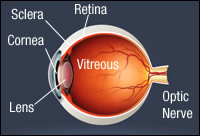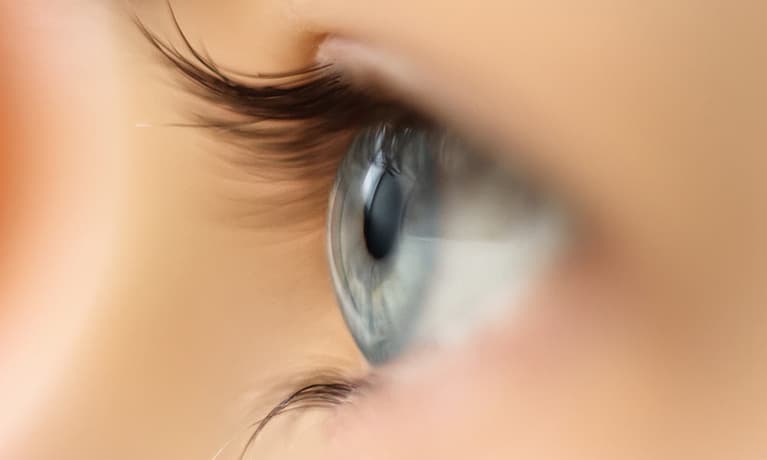Did you know that creatures throughout Earth’s history have not always had vision as we know it today? Eyes are complex structures, but scientists believe they have not always been that way. I remember once being told that the eye was only one small part of the human body, so how complex could it possibly be? Little did that person know about the true inner workings of the eye!
The earliest known predecessors of the eye were PHOTORECEPTOR proteins which could only sense light. Fast forward to the Cambrian period (about 500 million years ago). During that time, there was an “explosion of evolution” and significant visual developments took place. Creatures gained the ability to distinguish more than just light or dark – they could detect shape. A rudimentary CORNEA (for focus) & IRIS (to adjust to varying light levels) soon appeared, as well as the AQUEOUS HUMOUR (fluid inside the eye which assists with circulation).
The ability to detect color gave some early creatures distinct advantages in survival over one another. Whereas some species lost the battle & died out, others thrived. Some creatures developed a “camera-like” focusing ability which allowed for focus both far away and up close. Today, we call that structure the CRYSTALLINE LENS.
Over time this “Survival of the Fittest” separated prey from predator. The prey had eyes on the sides of their heads to give a better field of view in case of attack, while the predator developed eyes in front for improved depth perception & better hunting skills.
Today some creatures have better night vision (such as a bat), while some have better daytime vision. One example of an animal with extremely sharp acuity is the eagle, which is able to spot a small field mouse a mile away from the air. We humans can barely see that mouse from a block away. Fortunately for us, our intelligence has allowed us to compensate with the creation of technology, such as telescopes, glasses, and contact lenses!
Below is an example of a Planarian, one of the earliest known creatures with a set of “eyespots.”

The next time you go to the zoo, try to determine whether creatures would be predator or prey based on eye position & think about the biological history behind the customized eyes each animal is sporting.
Below is the Human Eye as it is today. Each part plays a role in how we see each other & everything around us. Amazing!!

Written by Bart W., Milwaukee Eye Care’ Ophthalmic Technician
*Thanks to Scientific American & PBS for this educational material










